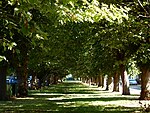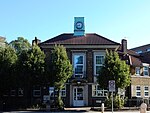Hounslow W.F.C.
Hounslow Women Football Club is an English football club based in London. The club was founded from a merger of Wembley Mill Hill F.C. and QPR Women F.C. in May 2001. The club was formerly known as QPR Women F.C until June 2018. The club is currently a member of the and play home matches at Rayners Lane F.C.'s ground, Tithe Farm in Harrow. It was known as Queens Park Rangers Ladies Football Club from the merger until a name change in June 2018 to Queens Park Rangers Women Football Club. The Main club made the decision to form its own new women's team for the start of the 2019/20 season which it named QPR FC Women who currently play their football in the London and South East Women's Regional Football League. The old Queens Park Rangers Women FC who were not under the umbrella of the football club at the time then made the decision to change their name to Hounslow Women FC with effect from the 2019/20 season and currently continue to play in the FA Women's National League.
Excerpt from the Wikipedia article Hounslow W.F.C. (License: CC BY-SA 3.0, Authors).Hounslow W.F.C.
London Loop, London
Geographical coordinates (GPS) Address Nearby Places Show on map
Geographical coordinates (GPS)
| Latitude | Longitude |
|---|---|
| N 51.514063888889 ° | E -0.45770277777778 ° |
Address
Uxbridge F.C.
London Loop
UB7 8HX London (London Borough of Hillingdon)
England, United Kingdom
Open on Google Maps







